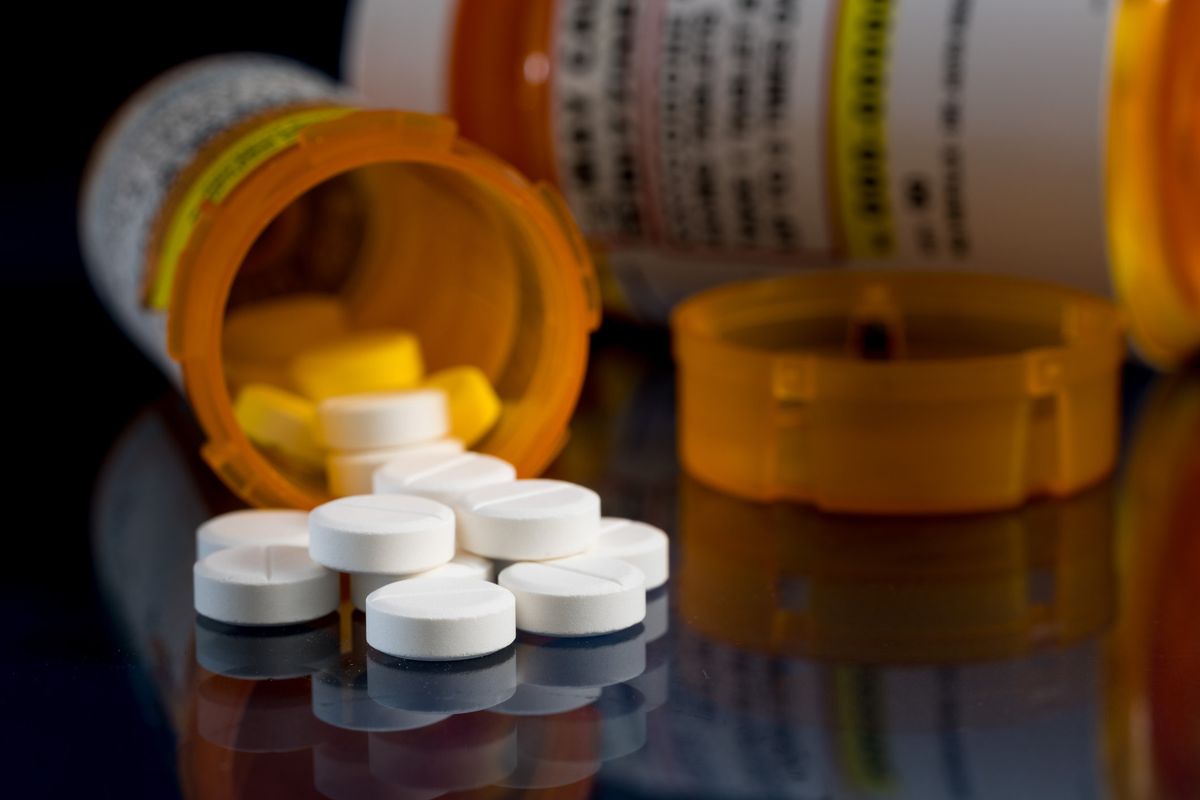By Elizabeth Chiarello, Saint Louis University
COVID-19 has overshadowed the U.S. opioid crisis, but that doesn't mean opioid addiction has gone away. During the COVID-19 pandemic, the opioid crisis has gotten worse. Drug overdose death rates rose 13% in the first half of 2020. COVID-19 threatens to dismantle an already frayed addiction treatment system, creating a crisis on top of a crisis.
The opioid crisis, or, more aptly, the overdose crisis, has plagued the U.S. for two decades. Drug overdose is the leading cause of accidental death, claiming 70,000 American lives each year. Opioids contribute to 130 deaths daily, enough people to fill a commercial airliner.
As a medical sociologist who has researched the opioid crisis for the last decade, I have seen the havoc it has wrought. Here is how I see COVID-19 making it worse.
A glimmer of hope, dashed
Overdose deaths increased steadily each year since 1999 until they declined 4.1% in 2018, largely due to fewer deaths involving prescription opioids. Experts suggest that lower opioid prescribing rates, expanded treatment access and increased naloxone access help explain the decline.
That brief downturn gave way to steeply rising overdose death rates in 2019 and 2020 as deaths involving other drugs like cocaine and methamphetamine rose.
Not only are numbers going up, but the drugs that contribute to overdose have changed.
Many overdose deaths involve multiple drugs. Prescription drugs now play a less prominent role than heroin, cocaine and methamphetamine. Synthetic fentanyl – a potent illegal opioid manufactured in labs – poses the biggest threat. It contributes to twice as many overdose deaths as prescription opioids.
Inadequate addiction treatment
The overdose death rate – 20.7 deaths per 100,000 people – comes as no surprise to people familiar with U.S. addiction treatment.
Only 17% of people with addiction get treatment.
And addiction treatment is notoriously fragmented and underfunded. Cordoned off from mainstream health care, the addiction treatment industry receives scant regulation. Quality varies. Only one-third of facilities provide medications for addiction treatment, evidence-based care that reduces overdose risk.
In the face of inadequate addiction treatment, harm reduction strategies are effective. Harm reductionists encourage people who use drugs to use strategies that protect them from overdose, infectious disease and abscesses from sharing or reusing syringes.
Programs that reduce harm include naloxone programs that distribute naloxone throughout communities and syringe services programs that distribute clean syringes to people who inject drugs. These programs, while effective, receive tepid support, largely due to stigma. Naloxone distribution programs and syringe services programs operate on shoestring budgets with limited hours that have only become more restricted during the pandemic.
Clash of the crises
When the COVID-19 pandemic began, the federal government took measures to lessen the pandemic's impact on the opioid crisis.
The government lowered barriers to medications for addiction treatment by allowing methadone clinics to give patients medication to take home and by allowing physicians to provide buprenorphine, another drug used in recovery, through telemedicine. These measures reduced in-person contact.
But people dealing with the disorder still face challenges. For one, they cannot attend in-person support groups. Social isolation increases the likelihood of drug use and overdose. While figures are not yet available, much anecdotal evidence suggests that coping with the pandemic increases stress and anxiety while disrupting routines that are important for recovery.
And, COVID-19 has made the illegal drug supply more dangerous. In the illicit market, drugs contain various substances. A person who purchases heroin might end up with a mix of heroin, fentanyl and oxycodone, drugs of varying strengths. People who use drugs typically get them from a known supplier, so they know what they are getting and how much to take.
COVID-19 interrupted the illicit drug trade, so there were fewer drugs coming into the country. When supply runs low, people do not stop using drugs; they get drugs of unknown composition from new suppliers. If someone buys heroin but unknowingly receives much stronger fentanyl, the overdose risk skyrockets. People die because they do not know what drug they are taking.
Crisis compounded
In addition, COVID-19 exacerbates the trauma that leads to overdose. Addiction is a “disease of despair," meaning it is more common among people with poor social and economic prospects. Mental health conditions, job loss and housing instability all contribute to drug use.
COVID-19 makes treatment less available. Treatment centers struggling to stay open are reducing hours and furloughing staff. Syringe service program site closures and stalled naloxone programs undermine harm reduction efforts.
Strategies to expand treatment have been of some help. However, only physicians who already have an X Waiver – a special dispensation to prescribe opioids for addiction – can provide telemedicine for buprenorphine. The federal government's actions have moved care online, but only minimally increased treatment capacity.
A systemic solution
Things are dire, but leaders can deploy effective strategies now. In the short term, leaders can double down on harm reduction. They can blanket communities with naloxone, putting it in every library, gas station, pharmacy and vending machine, making it as commonplace as a fire extinguisher. They can invest in syringe services programs and encourage people to use drug test strips to test for fentanyl.
They can expand medications for addiction treatment by eliminating the X waiver, letting all licensed physicians provide them, and by allowing pharmacists to provide buprenorphine, an approach showing favorable results in Rhode Island. They can expand Medicaid, which requires insurers to cover treatment for addiction. These measures could save lives.
Leaders also need a long-term strategy that tackles the root causes of addiction. As COVID-19 makes clear, disrupting the drug supply does not make addiction disappear – it puts people with addiction at greater risk. The rise in cocaine overdose deaths is especially worrying, because while medications for addiction treatment work for opioid use disorders, they do not work for cocaine use disorders.
In the last 20 years, the U.S. has cycled through overdose spikes due to prescription opioids, then heroin, then fentanyl. Now cocaine and methamphetamine pose looming threats.
Investing in healthy communities is the best line of defense against overdose. A stronger social safety net would improve problems that lie at the root of addiction such as unemployment, homelessness and mental health conditions. Building infrastructure to prevent and treat addiction will equip our communities to weather storms like COVID-19.
[Deep knowledge, daily.Sign up for The Conversation's newsletter.]![]()
Elizabeth Chiarello, Associate Professor of Sociology, Saint Louis University
This article is republished from The Conversation under a Creative Commons license. Read the original article.







